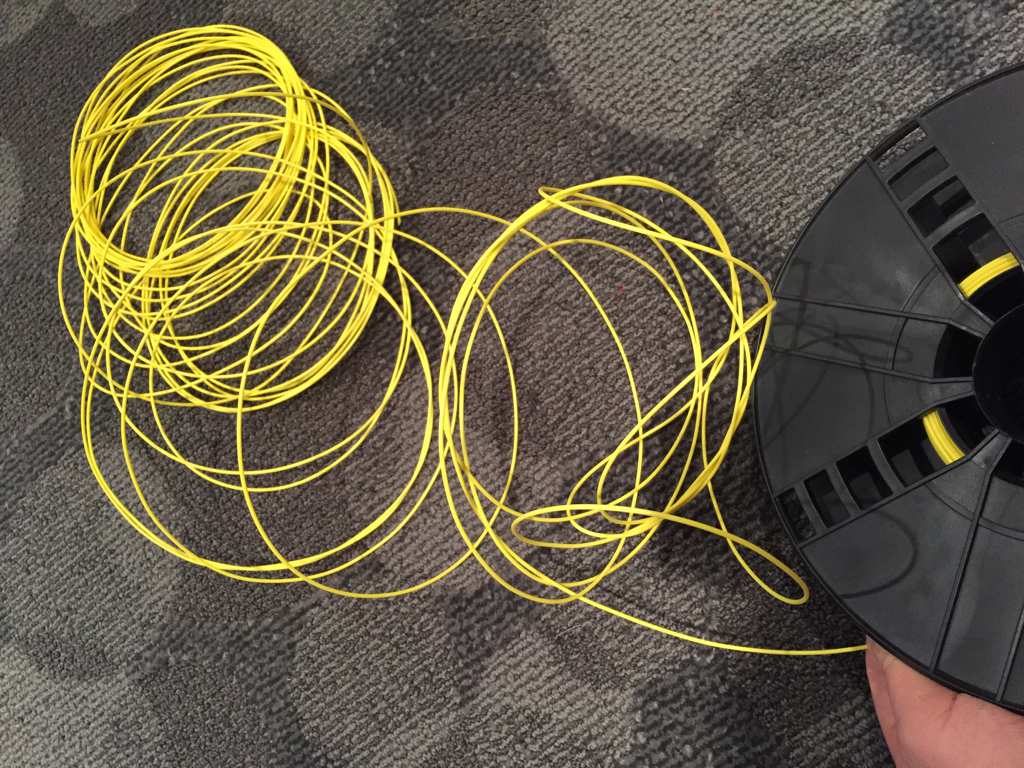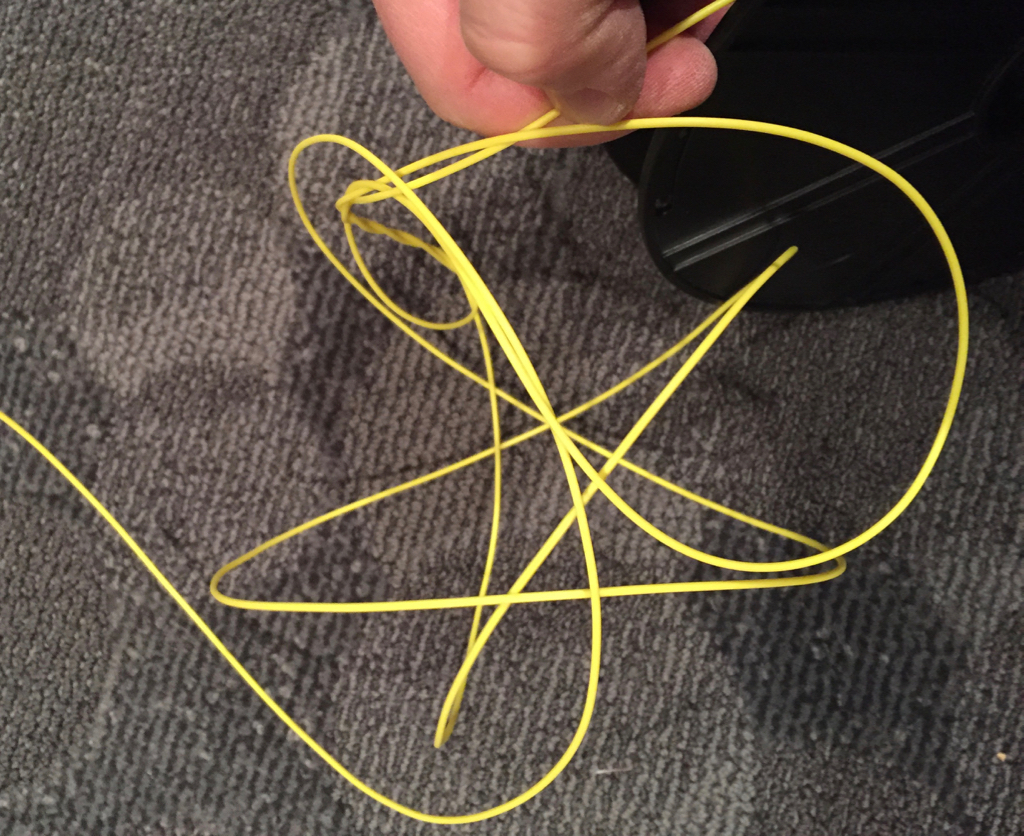Recently we attempted to use a loose spool of filament in the lab, but quickly found major problems and suggest vendors adjust their filament packaging methods.
It started innocently enough, with a friendly vendor supplying us with a loose spool of filament in a sealed plastic bag. This is quite a common occurrence, with filament samples typically being less than 100g, supplied loose in a bag. Often you’ll find a tie-wrap or similar holding the strands tightly together.
On this occasion, though, the vendor decided to provide a loose spool of considerably larger size: over 200g – and without anything to hold the strands together.
Inevitably, there was a tangle. A nasty tangle.
The ends of loose strands of filament have a nasty habit of curling around and under other strands. In a loose bundle, particularly one that has been handled, this is inevitable.
At some point, you want to actually use the filament in your 3D printer, but, as experienced 3D printer operators will tell you, there is a risk that the filament will get knotted up sometime during the print.
It’s a terribly annoying problem, because the bundle of filament might appear to be neatly arranged, but it really isn’t. You’ll soon discover the tangle in mid-print, as the pull of the extruder encounters the tangle and knots up.
For smaller loose bundles, you can usually just shake out the filament into untangled form. Often you can simply lift off the first few loops and quickly discover and rectify any issues. However, on this particular bundle, it was too large and too pre-tangled to make that work. Thus began a 30 minute exercise in filament de-tangling.
The objective is to mount the filament on a fresh empty spool and ensure there are no tangles while doing so. This is best done with an assistant, as you often have to roll out lengths of filament to find problems. It’s a tricky business as you must be very careful not to break or even bend the filament. A bend could jam up your 3D printer’s extruder, as it may have a diameter larger than expected.
Anyhow, our filament was eventually successfully mounted on a real spool – and the end of the filament was secured to prevent further tangles.
The moral of the story here is that filament vendors should refrain from providing filament in loose bundles, particularly if the quantity of filament is large, say over 50g.
When filament is produced by reputable factories it is always taken up on a spool, so it’s not as if the filament could not be re-spooled onto a smaller spool.
3D printing is difficult to do for many people on its own; we don’t need to add to everyone’s troubles by increasing the risk of filament tangles. Spools rule



